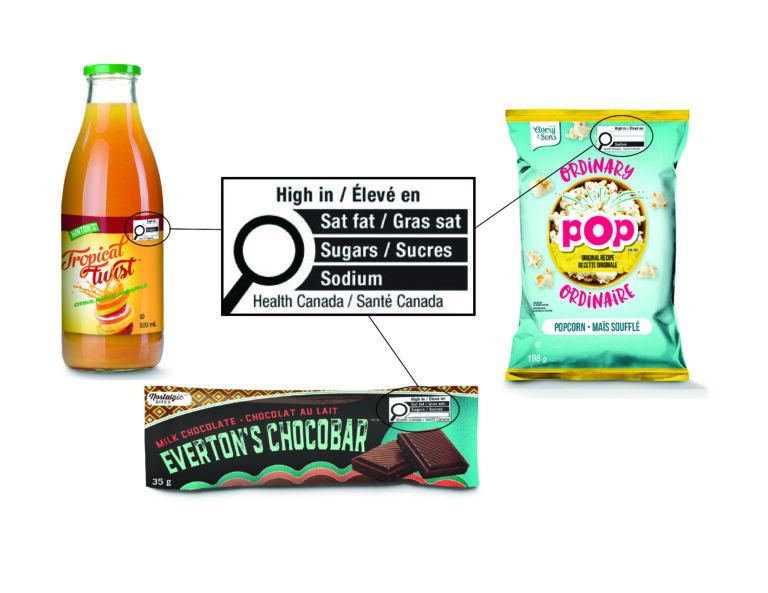The updated Canadian food labelling requirements are continuing to move forward with Health Canada unveiling the new front-of-package nutrition symbol on June 30 and compliance with the new nutrition facts table and list of ingredients due December 15, 2022. In this article, we discuss the front-of-package (FOP) nutrition symbol, its requirements, and some of the controversy that has surrounded it.
The regulation went into effect July 20, 2022, but the food industry has been given until January 1, 2026, to changeover its labels. However, with the change impacting a vast array of foods, food processors should be working to begin the process now. Foods that will require a FOP nutrition symbol include:
- General prepackaged foods that meet or exceed 15% DV of saturated fat, sugars, or sodium (e.g., deli meats, soups, frozen desserts, puddings).
- Prepackaged foods with a small reference amount (≤ 30 g or mL) that meet or exceed 10% DV of saturated fat, sugars, or sodium (e.g., pickles, salad dressing, cookies, breakfast cereals). Because these foods are typically consumed in smaller amounts and can be concentrated sources of these nutrients, they have a lower threshold.
- Prepackaged main dishes with a reference amount of ≥ 200 g (170 g for those intended solely for ages 1 to 4) that meet or exceed 30% DV of saturated fat, sugars, or sodium (e.g., frozen lasagna, meat pie, pizza). Because main dish foods make up more of the daily intake of nutrients, they have a higher threshold.
There also are exemptions to the FOP labelling requirement which include:
- Packaged individual portions that are only intended to be served by a restaurant or other commercial enterprise to accompany meals or snacks (e.g., crackers served with soup or creamers with coffee)
- Milk and cream sold in refillable glass containers
- Foods in very small packages
- Foods with a protective effect on health, such as fruits and vegetables without added sodium, sugars, or saturated fat
- Certain dairy products, such as plain milk, plain yogurt, and cheese because they are important sources of calcium that is needed to promote bone health and reduce the risk of osteoporosis
- Certain products used for the same purpose as butter, sugar, or salt (e.g., honey, celery salt, maple syrup, vegetable oils, seasoning salt)
- Raw, single ingredient whole cuts of meat, poultry and fish that do not carry a nutrition facts table
- Raw, single ingredient ground meats and poultry to avoid giving the impression that they are nutritionally inferior to whole cuts that do not carry a nutrition symbol
It is interesting to note that raw, single ingredient ground meats and poultry were not originally exempted from the FOP requirement, but pushback from the industry succeeded in gaining the exemption – with the Health Canada’s added caveat that it is exempted “to avoid giving the impression that they are nutritionally inferior to whole cuts that do not carry a nutrition symbol.” Similar to the exemptions for milk, many cheeses, and fruit, Health Canada’s exemption was also because it was deemed to have health benefits in spite of the “nutrients of concern,” (e.g., those high in fat).
For products not exempted, the Health Canada rule poses very specific requirements, mandating that the symbol always appear in the same way, so that it is easy to find and use. Although the size of the package determines the size of the symbol, ensuring it can be easily seen on packages of all sizes, the symbol must appear in the upper half of the label for most package shapes, and on the right half if the label is wider than it is tall. (Health Canada examples shown in photo above.)
With Health Canada’s continuing focus on consumer health and product transparency, we can expect that such consumer protection and “informed choices” labelling will continue to gain steam and get stronger. And, in all probability, will provide precedent for similar actions for U.S. producers as well.





